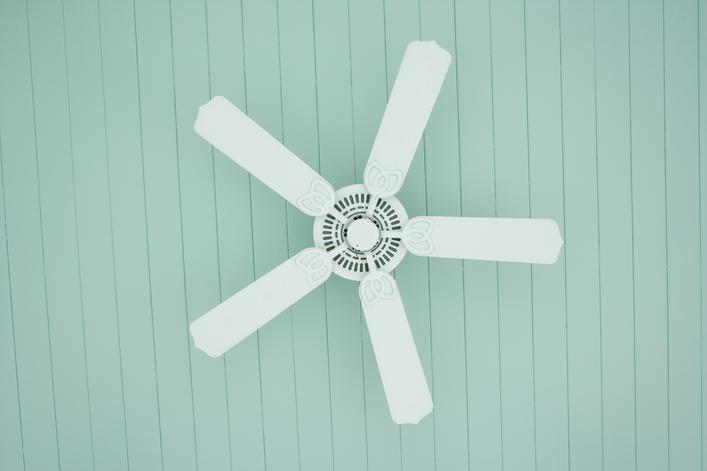How to Clean a Ceiling Fan (And Why You Should)
When you’re taking a few minutes to quickly tidy up your home, you probably focus on what’s most visible — things like floors, countertops, and stuff at eye-level. Even when you’re doing more of a thorough cleaning, you may not think to look up, leaving your ceiling fans (literally) in the dust.
Although they may seem like something that should be at least somewhat self-cleaning, ceiling fans (and their light fixtures) do need your time and attention. Here’s what to know about cleaning them, and why it’s important in the first place.
Why you should clean your ceiling fan
When it comes to the dust that accumulates on your ceiling fan, it’s not a matter of it being out of sight, and therefore, out of mind. Like any other home appliance, ceiling fans collect not only dust, but dirt and grime as well, and when that builds up, it can make the fan noisy when it operates, and eventually cause damage to its motor.

In other words, taking the time to clean it now may mean it will last longer — saving you from the cost of having to replace it sooner than necessary. Plus, dirty fan blades don’t move the air around a room as efficiently as clean ones, so it’ll take more energy to get the same results. But most importantly, when ceiling fan blades are covered in dust and/or pollen when they’re switched on, they circulate that dirt around the room (and your home).
How to clean a ceiling fan
Before you do anything else, make sure (as in, double check) that the fan is turned off, and then wait for it to come to a complete stop. You may now proceed.
Dust the fan blades
If you anticipate a lot of dust and dirt coming down, you may want to put a drop cloth or old sheet on the ground underneath the fan to catch the debris. Otherwise, you can just sweep or vacuum the area when you’re finished.
For regular dusting maintenance, you may want to invest in a dedicated duster with an extendable handle to make it easier to include the fan in your normal cleaning routine. (Ideally, this is something you should be doing weekly.)
But for bigger jobs, it may be a better idea to (safely) get up on a ladder and dust the blades up there — either wiping each side with a cloth, or by putting a pillowcase over each blade and then pulling it back to remove any dust or other material.
Clean the fan blades (and light fixture)
If it’s been some time since you’ve cleaned the fan blades (or it’s your first time), it’s definitely time to get out the ladder if you haven’t done so already. After dusting the fan blades, wipe each one down using a cloth or sponge moistened with an all-purpose cleaner. Don’t spray the cleaner directly on any part of the fan.
For ceiling fans with light fixtures, you can either wipe down the exterior of the lamp part while you’re up there, or carefully remove the light’s cover or individual globes, and wash them by hand in the sink.
Be sure to let the parts of the light fixture dry completely before you replace them. Similarly, wait until the fan blades are completely dry before turning the fan on (if you do so while they’re still damp, they’ll likely attract new dust and put you back at square one).







